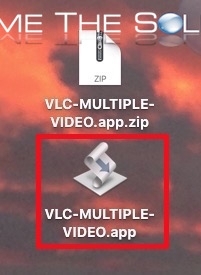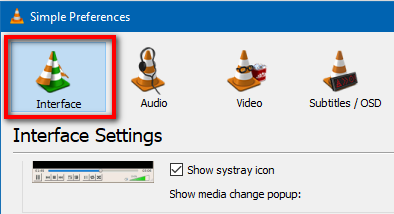

If “Force multicast RTP via RTSP” is selected this is the same as selecting “RTP/UDP multicast” for Streaming Mode in the Management Client. If “Use RTP over RTSP (TCP)” is selected this is the same as selecting “RTP/ RTSP/TCP” for Streaming Mode in the Management Client.

Select “All’ for “Show settings” in the lower left corner of the dialog. Open the VLC Preferences dialog – Tools->Preferences (Ctrl + P). To see the codec of the stream in VLC select Tools->Codec Information (Ctrl+J)Īlso verify that VLC uses the same Streaming Mode as is specified in the Management Client. If the video/audio starts playing, verify that the codec is correct with the one set in the Management Client. Make sure to use the same credentials also when adding the device in the Management Client. You might get a prompt to enter authorization credentials. In the text field enter the URL of the video/audio stream from the device.
ENABLE MULTIPLE VLC FREE
If you have any further questions, please feel free to peruse our other support articles.From the Media menu select “Open Network Stream” (Ctrl+N). We hope that you have found this guide both informative and enjoyable. Select Audio > Audio Device > Audeze Mobius 3D 8Ch. Once this is done, exit out of the Audio Midi Setup utility and open your VLC player.Left Front (Front Left), Right Front (Front Right), Center (Front Center), Sub-woofer (Low Frequency Effects), Left Surround (Side Left), Right Surround (Side Right), Left Rear Surround (Back Left), Right Rear Surround (Back Right) NOTE: Left Rear Surround and Right Rear Surround will only be present if “7.1 Rear Surround” was selected.Double check that the speakers are assigned as follows, and then select Apply: This should bring up a diagram of the appropriate speaker layout. In the Speaker Configuration window, select Multichannel and 5.1 or 7.1 Rear Surround.Everything discussed in this guide pertains to the device with 8 outputs. The first listing corresponds to your mic, while the second corresponds to the headphones. You will notice that the first of these listings features 2 inputs and 0 outputs, while the second features 0 inputs and 8 outputs. NOTE: On Mac, Mobius is listed as two separate devices within the Audio Midi Setup utility. Once this is done, select the Output tab from the right hand side of the window and then the Configure Speakers button in the bottom right hand corner. Select your "Audeze Mobius 3D 8Ch 2" as your system’s sound output device.To ensure that your headset is properly configured for Surround Sound, open your Audio MIDI Setup utility and select Window > Show Audio Devices.Well, all of the instructions except for Step 5 - that one is optional. NOTE : If you do not see DirectX listed under Output modules, select “Dolby Digital” instead and follow the rest of the instructions as written. Sit back, relax, and enjoy your content!.

Once this is done, set the “Speaker configuration” to 5.1 or 7.1 (depending on your content), Save, and then restart VLC.In the new settings window on the left-hand side, locate Audio > Output modules > DirectX, then set your "Audeze Mobius 3D 8Ch" headset as the Output device.Select the “Audio” tab at the top of the Preferences window, and then select “All” under the “Show settings” section in the bottom left-hand corner of the window.Launch VLC and select Tools > Preferences.But you already knew that, didn't you? After all, included with your Mobius was a shiny new Traveler's Guide which you totally read.right? Of course you did! NOTE: Surround Sound playback through the Mobius is only available in USB mode. Once VLC is installed, please connect your Mobius to your device using one of the included USB cables. VLC can be downloaded by accessing the following link and selecting your appropriate operating system:
ENABLE MULTIPLE VLC HOW TO
Greetings fellow traveler! If you're reading this, it means that you are in possession of content with 6-8 audio channels and are wondering how to experience that content in its full Surround Sound glory through your Mobius! While the Universe is vast and contains a wide variety of options for media playback, we have chosen to use VideoLAN Client (VLC) for the purposes of this guide.īefore we begin, you will need to make sure you have VLC downloaded and installed on your system.


 0 kommentar(er)
0 kommentar(er)
